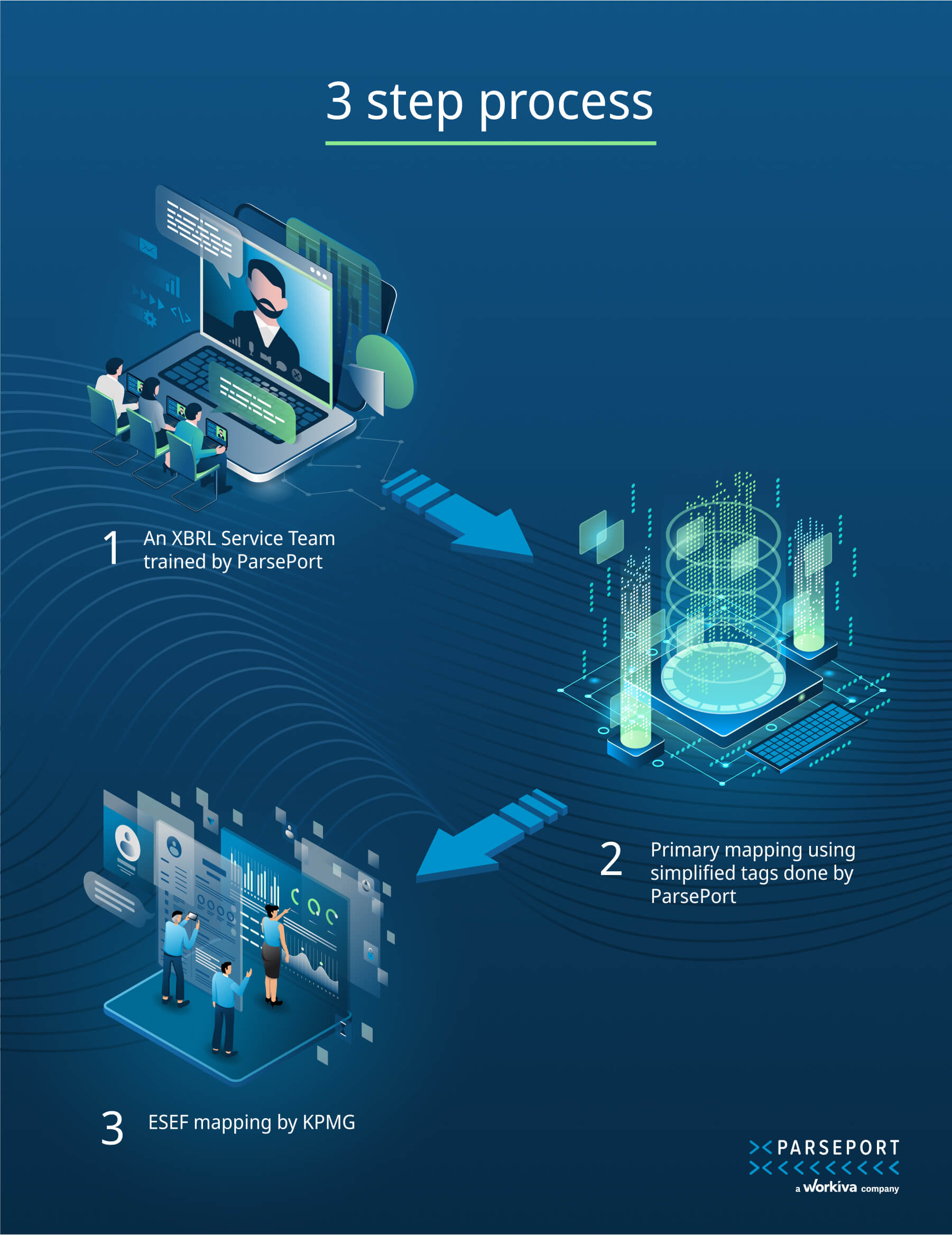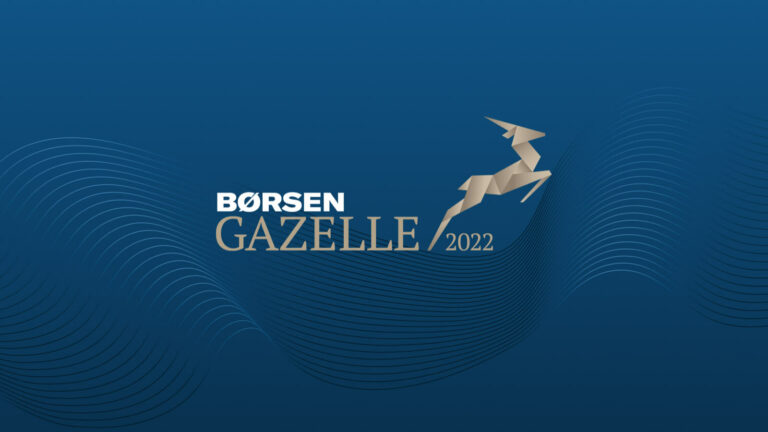How KPMG reports for ESEF with ParsePort

KPMG turns to ParsePort for ESEF support
Every year, an auditor such as KPMG Nordic is entrusted with mapping and converting a significant number of ESEF reports. The average business only needs to map and convert one or two ESEF reports.
Additionally, auditors must be able to inspect XBRL and iXBRL files in order to audit their clients’ reports.
Not only does KPMG manage a huge quantity of ESEF reports, but it also needs to be well-versed in ESEF and inline XBRL.
As a result, KPMG Nordics approached ParsePort.
Their request was simple: a tailor-made solution that would precisely meet the requirements of their auditors on mapping, conversion, and inspection duties.
There was no doubt that we could help them.
What KPMG needs: in-house ESEF reporting that requires no programming
KPMG needed to move as much of the ESEF reporting process in-house but did not want to be involved with the ESEF taxonomy or regulation updates or the development and maintenance of conversion and auditing software.
Jane Thorhauge Møllmann, Director in KPMG Denmark’s Department of Professional Practice, details their needs:
As auditors, we need the ability to both handle and inspect ESEF reports, which is why we need a way to map, convert, and audit ESEF reports on a large scale. Naturally, we would like to move as much of it in-house as possible, but we also did not want to deal with taxonomy updates or developing and maintaining the tools necessary to carry out those processes. After all, we are auditors, not [iXBRL] software developers.
The solution: a collaborative ESEF approach
Together, we devised a collaborative approach in which ParsePort will:
- Provide the iXBRL software.
- Train KPMG employees to audit XBRL and iXBRL files.
- Train employees to manage the mapping and conversion of ESEF reports of behalf on their clients.
Is your organization looking for an ESEF reporting solution? Book a free demo →
A look at KPMG’s newly designed ESEF reporting process
The different layers that make up KPMG’s current ESEF reporting process are as follows:
1. An XBRL Service Team trained by ParsePort
When it comes to mapping and ESEF conversion, the key difference between KPMG and many of our other clients isn’t just the number of reports to convert.
KPMG also requires a deeper understanding of iXBRL and how the tools function in order to respond to questions from its clients.
To accommodate the needs of KPMG, we have set up and trained an XBRL Service Team consisting of their own employees.
2. Primary mapping using simplified tags done by ParsePort
The primary mapping will be carried out automatically by ParsePort, which means that KPMG will be able to leverage our system of simplified tags.
3. ESEF mapping by KPMG
Step 2 allows KPMG’s XBRL Service Team to focus on high-quality ESEF mapping for its clients while avoiding the time-consuming element of a manual mapping procedure.

Why in-house iXBRL mapping and ESEF conversion were essential for KPMG
KPMG wanted to complete their ESEF mapping and conversion in-house.
Jane from KPMG explains that,
If we had opted for a solution where the mapping and conversion were carried out off-site by a third party, it would have been a nightmare to provide support. Our clients would have to either contact the provider on their own, in which case we would not be able to guarantee the level of service we want to provide, or they would have to wait after contacting us for support while we reached out to the provider on their behalf. None of those solutions seemed quite right to us.
ParsepPort was able to design a solution for them that allowed them to maintain in-house mapping and conversion while leveraging our XBRL expertise and software.
KPMG clients also benefit from our ESEF solution
Two solutions for two types of clients: Outsourced and Collaborative Tagging Service
Owing to the specially built solution developed by ParsePort, KPMG is able to offer two services: an outsourced and collaborative tagging service that makes it easy for their Nordic clients to transition to ESEF reporting.
Depending on their needs, KPMG clients in the Nordic region will be able to select from the following options:
- An Outsourced Tagging Service
- A Collaborative Tagging Service
The benefits of an outsourced iXBRL tagging service
Clients of KPMG can opt for an outsourced solution that handles the iXBRL mapping and ESEF conversion of their annual financial reports.
This eliminates the need for clients to have in-depth knowledge of ESEF and eliminates the need for them to implement new iXBRL software.
KPMG can take the hassle out of iXBRL tagging for their clients owing to the ParsePort ESEF solution.
The benefits of a collaborative iXBRL tagging service
Clients can also opt for the more collaborative “Tagging Service,” which includes KPMG’s XBRL Service Team assisting them in identifying appropriate elements in the ESEF taxonomy, as well as creating and anchoring new taxonomy items and extensions relevant to their organization.
KPMG’s new ESEF auditing and inspection workflow
In terms of ESEF reporting, the auditor’s capacity to efficiently audit reports is absolutely vital.
KPMG is now able to easily audit ESEF reports with the ParsePort XBRL Inspector, which lets them perform an inspection in just a few clicks.
Using the ParsePort XBRL Inspector, KPMG auditors can:
- Generate validation reports with our online XBRL validation tool.
- Compare ESEF taxonomy packages as well as XBRL and iXBRL files.
- Create visual representations of the annual reports.
- Generate fact lists, which signifies a specification of each individual iXBRL element used within the ESEF report.
In short, the ParsePort XBRL Inspector makes it simple for auditors to do all XBRL and iXBRL auditing tasks.
Map, convert, and audit with one solution
KPMG is now able to map, convert, and audit XBRL, iXBRL reports with one simple solution. Jane Thorhauge Møllmann concludes,
We get the ability to both map, convert, and audit ESEF reports, while we can keep servicing our clients to the same high standards they’re used to, and that’s exactly what we wanted.







